Speakers
Roel van de Krol
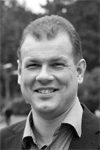
Helmholtz-Zentrum Berlin für Materialien und Energie GmbH, Institute for Solar Fuels, Hahn-Meitner-Platz 1, 14109 Berlin, Germany
roel.vandekrol@helmholtz-berlin.de
Roel van de Krol is head of the Institute for Solar Fuels at the Helmholtz-Zentrum Berlin für Materialien und Energie (HZB), and professor at the Chemistry Department of TU Berlin. After earning his PhD from TU Delft in 2000 and a postdoctoral stay at M.I.T. (USA), he returned to TU Delft where he was an assistant professor until 2012. At HZB, his research focuses on the development of materials and devices for the photoelectrochemical conversion of sunlight to chemical fuels. Understanding how surface and bulk defects in thin films and nanomaterials affect light absorption, charge transport, recombination and catalytic activity is at the heart of these efforts.
Eric Vauthey
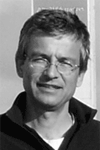
Dpt. de Chimie Physique, Université de Genève, Switzerland
Eric.Vauthey@unige.ch
Eric Vauthey obtained his chemistry diploma (1986) and Ph.D. (1989) from the University of Fribourg. After two postdocs (Imperial College London and ETH Zurich), he started independent research in Fribourg in 1992. He has been professor at the University of Geneva since 2001. His main research interest is the dynamics of molecular photoinduced processes in the condensed phase and at interfaces. http://www.unige.ch/sciences/chifi/Vauthey
Nathalie Banerji

Department of Chemistry, Faculty of Science, University of Fribourg, Switzerland
natalie.banerji@unifr.ch
Natalie Banerji studied Chemistry at the University of Geneva and obtained her Ph.D. in Physical Chemistry in 2009, under the supervision of Prof. Eric Vauthey. She then moved to the University of California in Santa Barbara (USA), to work on organic solar cells during a post-doctoral stay with Prof. Alan J. Heeger (2009-2011). In 2011, she was given the opportunity to start her independent research career in Switzerland at the Ecole Polytechnique Férérale de Lausanne (EPFL) with an Ambizione Fellowship by the Swiss National Science Foundation (SNSF). She obtained an SNSF-Professorship at the University of Fribourg (Switzerland) in 2014, and was subsequently nominated tenured Associate Professor in 2015.
Ed Constable

Department of Chemistry, University of Basel, Switzerland
edwin.constable@unibas.ch
Ed Constable was born in Edinburgh (Scotland), but grew up in Hastings (England) where he went completed his school studies. In 1974 he started his studies in chemistry at St. Catherine's College, University of Oxford, where in 1978 he obtained his BA in Chemistry. He completed his D.Phil at Linacre College, University of Oxford under the supervision of Professor Kenneth Seddon and at that time began a love-affair with ruthenium chemistry and photochemistry that continues to this day. He held a number of research fellowships at the University of Cambridge before being appointed to a University Lectureship and Fellowship of Robinson College in 1984. He remained at Cambridge until 1993 when he was appointed Professor of Inorganic Chemistry at the University of Basel (Switzerland). In 2000 he left Basel to take up a position as Professor of Chemistry at the University of Birmingham (England) where he was shortly appointed Head of School. He returned to the University of Basel as Professor of Chemistry in 2002.
He is a Fellow of the Royal Chemical Society and member of the American Chemical Society
He is or has been on the Editorial Boards of numerous journals, including Chemical Communications, Chemical Reviews, Chemical Society Reviews, Coordination Chemistry Reviews, New Journal of Chemistry, Polyhedron and Supramolecular Chemistry.
Hendrik Bluhm

Chemical Sciences Division, Lawrence Berkeley National Laboratory, Berkeley, CA 94720
hbluhm@lbl.gov
Hendrik Bluhm is a Senior Scientist in the Chemical Sciences Division at Lawrence Berkeley National Laboratory and an Adjunct Professor in the Department of Chemistry & Biochemistry at the University of Maryland, College Park. He obtained his M.Sc. in Crystallography from the University of Leipzig (Germany) and his Ph.D. in Physics from the University of Hamburg (Germany). After a postdoc at LBNL he joined the Fritz Haber Institute of the Max Planck Society in Berlin, before moving back to LBNL and his current position. His research focuses on the interfacial chemistry of surfaces (e.g., metal oxides, ice, and aqueous solutions) under relevant environmental conditions, as well as the development of new experimental methods for the investigation of interfaces under operating conditions. Bluhm is an AAAS Fellow and a recent recipient of a Bessel Award from the Alexander von Humboldt Foundation.
Anders Hagfeldt
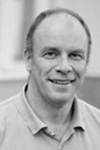
Laboratory of Photomolecular Science, Swiss Federal Institute of Technology Lausanne (EPFL), Lausanne, Switzerland
Anders.Hagfeldt@epfl.ch
Anders Hagfeldt is Professor in Physical Chemistry at EPFL, Switzerland. He obtained his Ph.D. at Uppsala University in 1993 and was a post-doc with Prof. Michael Grätzel (1993-1994) at EPFL, Switzerland. His research focuses on the fields of dye-sensitized solar cells, perovskite solar cells and solar fuels. He has published more than 380 scientific papers that have received over 35,000 citations (with an h-index of 93), and has 9 patent applications. He was ranked number 46 on a list of the top 100 material scientists of the past decade by Times Higher Education. In 2014 and 2015 he was on the list of Thomson Reuter’s Highly Cited Researchers, i.e. among the top 1% most cited in chemistry. He is a member of the Royal Swedish Academy of Sciences, Stockholm, Royal Society of Sciences in Uppsala, and the Royal Swedish Academy of Engineering Sciences in Stockholm. He is a visiting professor at Uppsala University, Sweden and Nanyang Technological University, Singapore
Jaques Moser
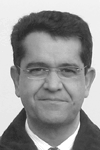
Photochemical Dynamics Group, Institute of Chemical Sciences & Engineering, EPFL, Switzerland
je.moser@epfl.ch
Jacques-E. Moser is titular professor in physical chemistry and is currently directing the Photochemical Dynamics Research Group of the École polytechnique fédérale de Lausanne (EPFL).
He is a graduate of EPFL, where he received a diploma degree in chemical engineering in 1982. After two stays during 1984-1985 at Concordia University and at the Canadian centre for picosecond laser flash photolysis in Montreal (Canada), he earned in 1986 his Ph.D. at EPFL under the supervision of Prof. Michael Grätzel.
In 1986, he joined the Eastman-Kodak corporate research laboratory at Rochester (NY, USA) as a postdoctoral fellow and was then associated with the newly created NSF Center for photoinduced charge transfer at the University of Rochester.
Jacques Moser was appointed lecturer of physical chemistry at EPFL in 1992 and was awarded the habilitation and the venia legendi in 1998. He is titular professor since 2005.
His research activity focuses on the study of the dynamics of photoinduced charge separation processes in photocatalytic and photovoltaic systems. He is the author and co-author of more than 150 scientific papers in the field (h-index 61). He currently teaches general physical chemistry to freshmen students and gives two classes on introductory- and advanced redox photochemistry in the BSc and MSc programs in chemistry and chemical engineering of EPFL.
Jeroen A. van Bokhoven
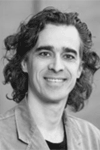
ETH Zurich, Institute for Chemical and Bioengineering, Switzerland
Paul Scherrer Institute, Switzerland
jeroen.vanbokhoven@chem.ethz.ch
Jeroen A. van Bokhoven completed a degree in chemistry at Utrecht University (Netherlands) in 1995 and went on to obtain a PhD in inorganic chemistry and catalysis from the same university in 2000 (with honours). From 1999 until 2002 he was head of the XAS (X-ray absorption spectroscopy) users - support group at Utrecht University. In 2002, he moved to the ETH, where he worked as senior researcher in the group of professor Prins. In 2006 he obtained an SNF assistant professorship in the Department of Chemistry and Applied Biology. He was the 2008 recipient of the Swiss Chemical Society Werner Prize.
Since 2010, Jeroen A. van Bokhoven has a Chair in Heterogeneous Catalysis at the Institute for Chemical and Bioengineering at ETH Zurich and is Head of Laboratory for Catalysis and Sustainable Chemistry at Paul Scherrer Institute.
Van Bokhoven works in the field of heterogeneous catalysis and (X-ray) spectroscopy. Goal is the determination of structure-performance relationships, which aid the design and construction of better catalysts for cleaner and more efficient processes. His main interests are heterogeneous catalysts and developing advanced tools in X-ray spectroscopy to study the catalyst structure under catalytic relevant conditions.
Grigory Smolentsev
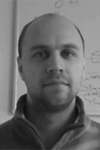
Paul Scherrer Institute, Switzerland
grigory.smolentsev@psi.ch
Grigory Smolentsev is Scientist at Paul Scherrer Institute (PSI), Switzerland. He obtained his PhD degree from Rostov State University, Russia in 2006. After a few years of collaborative PostDoc projects between European Synchrotron Radiation Facility (France), Southern Federal University (Russia) and Argonne National Laboratory (USA) he joined the group of Villy Sundostrom in 2009 in Lund University (Sweden). Starting from 2011 Grigory Smolentsev works in Paul Scherrer Institute and in 2015 he was promoted to the Scientist position. In 2009 he has received the Young scientist award of International X-ray Absorption Society.He develops time-resolved X-ray Absorption spectroscopy at SLS synchrotron to study molecular systems relevant for solar fuel production and water splitting.
Felix Studt
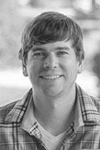
Institute of Catalysis Research and Technology (IKFT), Karlsruhe Institute of Technology (KIT), Germany
felix.studt@kit.edu
Felix Studt is professor at the Institute for Chemical Technology and Polymer Chemistry (ITCP) and the Institute of Catalysis Research and Technology (IKFT) at the Karlsruhe Institute of Technology (KIT). From 2010 until recently he was staff scientist and group leader at the SUNCAT Center for Interface Science and Catalysis, SLAC National Accelerator Laboratory. From 2006 until 2010 he was postdoctoral researcher at the Center for Atomic-scale Materials Design, Technical University of Denmark. He completed his PhD at the Institute of Inorganic Chemistry, University of Kiel, Germany.
Licheng Sun

Department of Chemistry, School of Chemical Science and Engineering, KTH Royal Institute of Technology, 10044 Stockholm, Sweden and State Key Lab of Fine Chemicals, Institute of Artificial Photosynthesis, KTH-DUT Joint Education and Research Center on Molecular Devices, Dalian University of Technology (DUT), 116024 Dalian, China
lichengs@kth.se
Prof. Licheng Sun received his PhD in 1990 from Dalian University of Technology (DUT). He went to Germany as a postdoc at Max-Planck-Institut für Strahlenchemie (now changed the name to Max-Planck-Institut für Schemische Energie konversion) with Dr Helmut Görner (1992-1993), and then as an Alexander von Humboldt fellow at Freie Universität Berlin (1993-1995) with Prof. Dr Harry Kurreck. He moved to KTH Royal Institute of Technology, Stockholm in 1995 and became assistant professor in 1997, associate professor in 1999 (at Stockholm University) and full professor in 2004 (KTH). He is presently also a distinguished professor and the director of Institute of Artificial Photosynthesis in DUT. His research interests cover artificial photosynthesis, advanced materials for water oxidation, hydrogen generation and CO2 reduction, functional devices for total water splitting, dye sensitized, quantum dot/rod sensitized solar cells, perovskite solar cells. He has published more than 400 peer reviewed papers in the fields of solar cells and solar fuels with total citations of >20 000, and H-index of 70. He is one of the 3 chairmen of editorial board of ChemSusChem, associate editor of J. Energy Chemistry. He is the recipient of Ulla och Stig Holmquist Prize in Organic Chemistry 2013, Arrhenius Medal 2014 and Wallmark Prize 2016 from the Royal Swedish Academy of Sciences, selected as Thomson Reuters Highly Cited Researcher 2014, and listed on 2014 The World's Most Influential Scientific Minds.
For more details:
Sandra Luber

Department of Chemistry, University of Zurich, Switzerland
sandra.luber@chem.uzh.ch
Sandra Luber received her MSc and PhD degree from ETH Zurich in 2007 and 2009, respectively. After postdoctoral studies at Biozentrum of the University of Basel (2010) and Yale University (2010-2011), she joined BASF SE in 2012. Currently, she is a project group leader at the University of Zurich. Awards include the ETH medal for an outstanding PhD thesis as well as the IBM Research Prize for Computer Modelling and Simulations in Chemistry, Biology, and Materials Science.
Peter Hamm
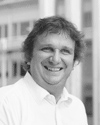
Department of Chemistry, University of Zurich, Switzerland
peter.hamm@chem.uzh.ch
Peter Hamm studied physics at the Technical University of Munich and carried out his PhD studies under Prof. Dr. W. Zinth at the Ludwig Maximilians University of Munich between 1991 and 1995. After a short stay as post-doctoral fellow at the same place, he moved to the University of Pennsylvania, Philadelphia (Prof. R. M. Hochstrasser) with a research fellowship granted by the 'Deutsche Forschungsgemeinschaft' (1996-1998).
In 1999, he was appointed as an independent group leader at the Max Born Institute, Berlin. In 2001, he moved to University of Zürich as Associate Professor at the Physical Chemistry Institute, and was promoted to Full Professor in 2007.
Jürg Osterwalder
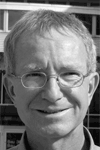
Department of Physics, University of Zürich
osterwal@physik.uzh.ch
Brief Bio:
• 1985 PhD in Physics, ETH Zürich
• 1985-87 Postdoc, Department of Chemistry, University of Hawaii, USA
• 1988-94 Senior Assistant, Department of Physics, University of Fribourg
• since 1994 Professor, Department of Physics, University of Zürich